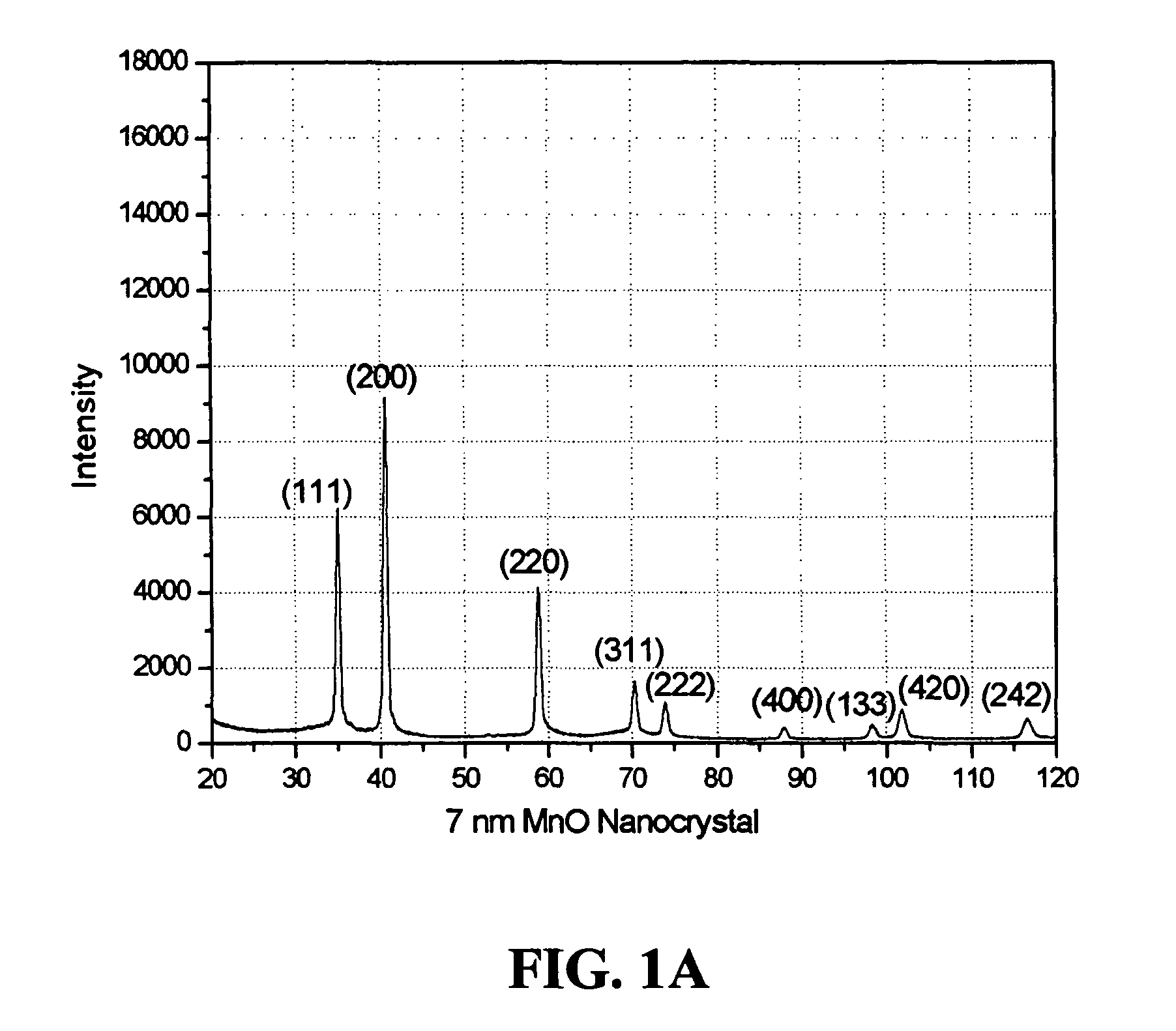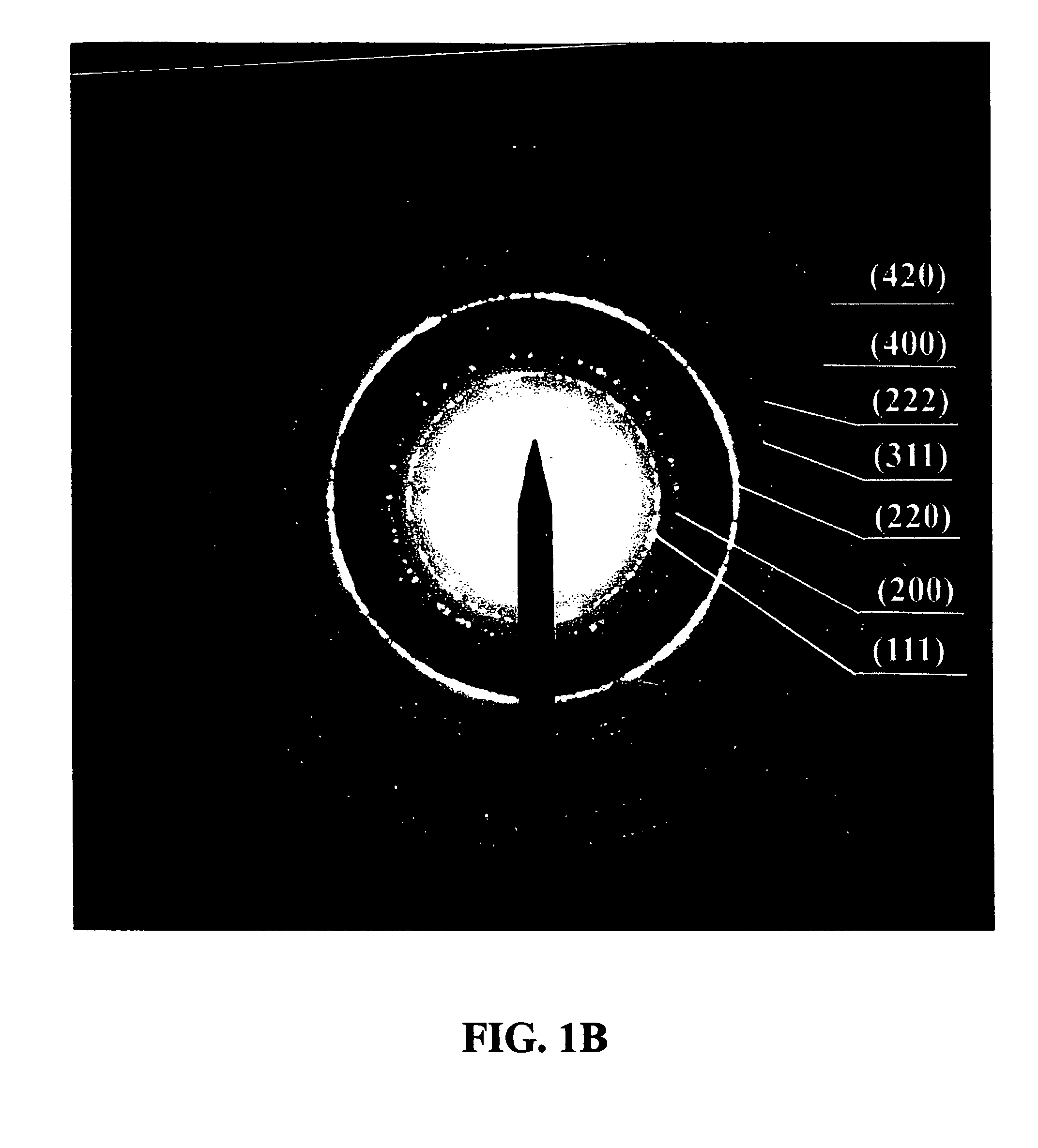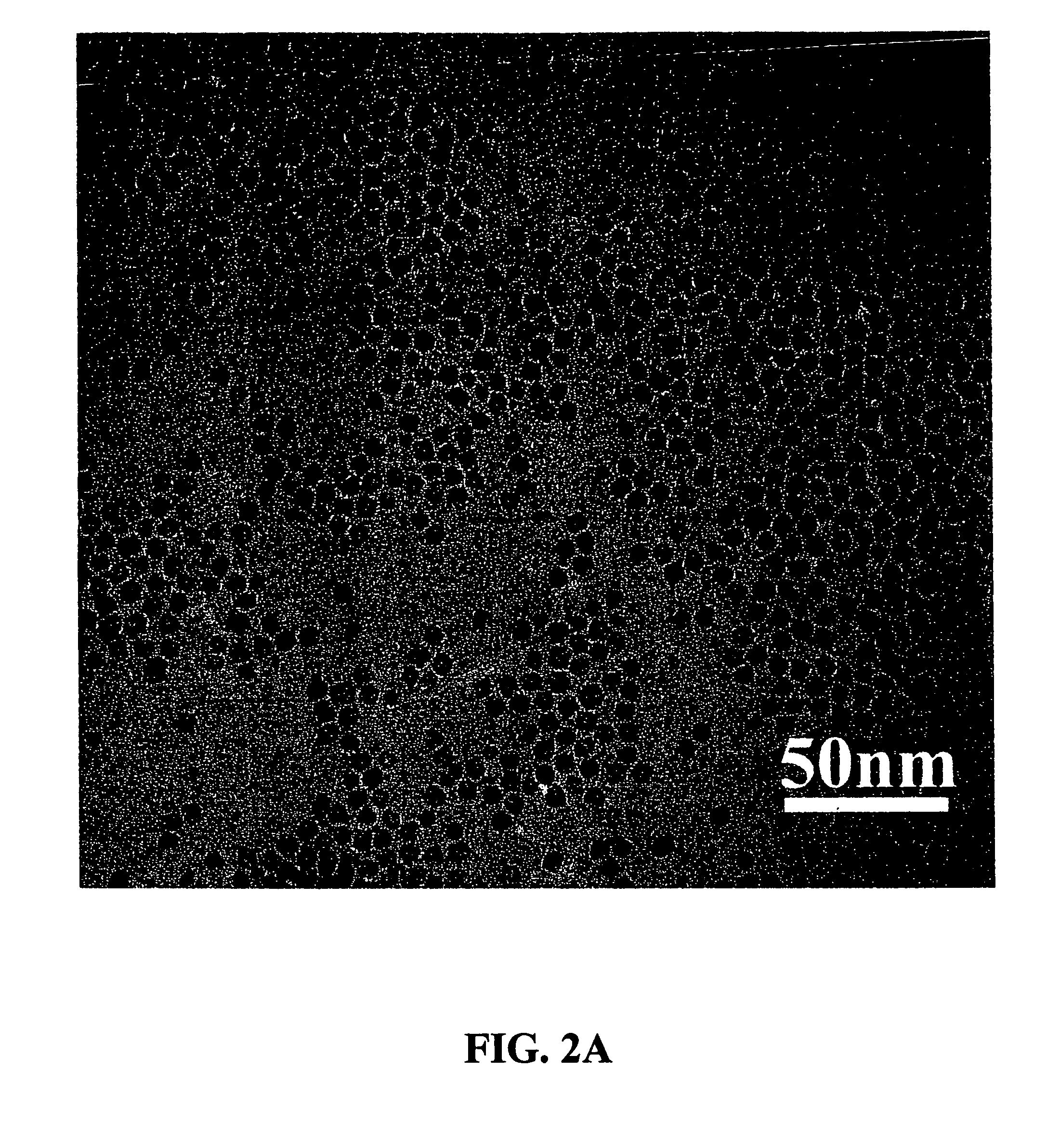Nano-sized particles, processes of making, compositions and uses thereof
a technology of nanoparticles and transition metals, applied in the field of nanoparticles of transition metals, can solve the problem of significant grain size of nanoparticles, and achieve the effect of economic and efficien
- Summary
- Abstract
- Description
- Claims
- Application Information
AI Technical Summary
Benefits of technology
Problems solved by technology
Method used
Image
Examples
example 1
[0066]An example of the synthesis procedure to produce metal oxide nanocrystals according to the present invention is provided. In this Example, the formation of MnO nanoparticles is described. To carry out this reaction, 4 mmol of dry manganese acetate (Mn(CO2CH3)2, Aldrich) was added to a mixture containing 15 ml of trioctylamine and 3 g of oleic acid (12 mmol) at room temperature. The resulting mixture was heated rapidly to 320° C. over 10 to 15 minutes; during this time, the solution gradually changed to black. The solution was maintained at 320° C. for 1 hour under N2 flow to yield uniform MnO nanocrystals with yields of up to 80%. The nanocrystals were cooled to room temperature, 25-60° C., and extracted into hexane by precipitation with ethanol in an amount between 5-200% volume of the original volume in the reaction vessel. As understood by the skilled practitioner, the extraction temperature was, in general, a temperature cooler than the reaction / heating temperature. In som...
example 2
[0073]This Example describes the formation of FeO nanoparticles prepared using the new synthesis according to the present invention. This method affords better control of the oxidation states of iron. In the method, dehydrated iron acetate (i.e., Fe2+ salt) was used as the iron precursor and monodispersed, metastable wustite phase FeO nanocrystals were synthesized. In the reaction, dry iron acetate was mixed with trioctylamine organic solvent (10-20 mL) containing oleic acid as surfactant / stabilizing ligand (2-5 mL), and the mixture was heated over 10 to 15 minutes to a temperature of 250° C. The reaction was kept at this temperature for 1 hour under N2. Thereafter, the FeO nanoparticles were cooled to 100° C., and were extracted into hexane by precipitation with ethanol, followed by centrifugation and redispersion in hexane as described hereinabove. The resulting nanocrystals were characterized using TEM (JEOL, 100cx, acc. 100 kV) and X-ray powder diffraction (XRD, Scintag X2), as ...
example 3
REFERENCES FOR EXAMPLE 3
PUM
| Property | Measurement | Unit |
|---|---|---|
| temperature | aaaaa | aaaaa |
| temperature | aaaaa | aaaaa |
| temperature | aaaaa | aaaaa |
Abstract
Description
Claims
Application Information
 Login to View More
Login to View More - R&D
- Intellectual Property
- Life Sciences
- Materials
- Tech Scout
- Unparalleled Data Quality
- Higher Quality Content
- 60% Fewer Hallucinations
Browse by: Latest US Patents, China's latest patents, Technical Efficacy Thesaurus, Application Domain, Technology Topic, Popular Technical Reports.
© 2025 PatSnap. All rights reserved.Legal|Privacy policy|Modern Slavery Act Transparency Statement|Sitemap|About US| Contact US: help@patsnap.com



